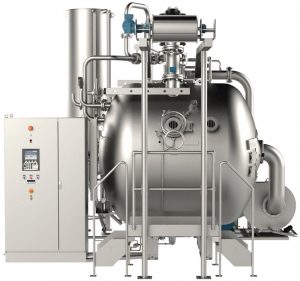
The dyeing and finishing industry continues to make strides in developing technologies that make the processes more environmentally friendly and sustainable.
TW Special Report
Sustainability continues to be at the forefront of textile machinery and technology development and there were a plethora of sustainable fiber and yarn developments in the spotlight at the recent ITMA 2023. However, as one of the first sectors in the textile industry to receive negative attention for the high use of water and chemicals, and amounts of wastewater generated, the dyeing and finishing industry is no stranger to sustainable innovation. But despite a focus on environmentally friendly technologies for much longer than other sectors in some cases, there were plenty of innovations shown at ITMA that showed the sustainability journey continuing in dyeing and finishing.
Some trends include low or no salt dyeing, use of carbon dioxide or nitrogen in processing as well as new heating systems and water reductions all designed to make the sector more sustainable.
Following is a look at just some of the latest technologies available for dyeing and finishing.
Germany-based Thies Textilmaschinen GmbH & Co. KG debuted the Signature Series machine, which was developed to dye cotton fabrics at the lowest possible liquor ratio using no salt. The jet-dyeing machine operates at an ultra-low liquor ratio as low as 1:2.3. For each batch, the liquor ratio is determined based on the fabric’s adsorption level plus a small quantity of water roughly equal to 0.6 liters per kilogram to ensure the pump used to circulate the dye liquor remains flooded. By removing water from the process, more of the dyestuff goes on to the fabric instead of hydrolyzing and ending up as a waste product. The machine delivers small amounts of highly concentrated dye throughout the dye cycle to ensure a level dyeing.
The machine can be used in three modes to dye using full salt, low salt or no salt. No salt dyeing reduces the effluent, which helps companies in countries with strict effluent policies; and both no and low salt processes save dyestuff and chemicals for both cost savings as well as environmental advantages. The Signature Series prepares, dyes and rinses the fabric with-out the need for intermediate processes or machines. As a high-pressure vessel, the machine also can be used to dye polyester and is a great option for a company that handles a variety of fabric substrates. An adjustable, curved J-box also means the machine can handle light and heavy fabrics in full and reduced loads. “Thies is opening a new chapter in fabric coloration,” said Verena Thies, managing shareholder, Thies. “Signature’s innovative ultra-low liquor ratio significantly enhances dye effectiveness, resulting in up to 20 per-cent decrease in dyestuff consumption. By combining Thies’ cutting-edge advancements, water usage is minimized by 25 percent.” These decreases are based on a comparison with Thies’ iMaster, the Signature’s predecessor.
DyeCoo Textile Systems BV, the Netherlands, introduced new additions to its carbon dioxide dyeing solutions at ITMA including a com-pact sampling and small-scale production machine, and a lab system for research and development. The company’s technology harnesses carbon dioxide (CO2) instead of using water to dye fabric. Under pressure, the CO2 becomes “supercritical” and acts as a solvent that easily dissolves the dye, transporting it into the fiber. The system requires no additional chemicals to help dissolve the dye, and there is a 98 percent dye uptake and therefore, very little waste. The technology also uses reclaimed CO2 from existing industrial processes where 95 percent
of the CO2 is recycled in a closed-loop process. According to DyeCoo, the use of 100-percent pure dyestuff that is evenly distributed over the fabric results in deep, vibrant colors.
Italy-based Master S.r.l. did not participate in this year’s ITMA, but the company recently introduced the Craftyflow and Craftyrope machines for dyeing denim warps. The machines feature a dual technology and can operate in a traditional manner in a natural air atmosphere or in a nitrogen atmosphere. When operating in a nitrogen atmosphere, the machine reduces the chemical consumption of hydrosulfite by 75 per-cent, caustic soda by 80 percent and water by 80 percent, according to the company. Master reports the technology already has been adopted by some notable denim producers.
Switzerland-based Benninger AG offers complete systems for continuous wet processing and discontinuous dyeing, including jet dyeing machines, dye house supply systems, caustic soda recovery plants and wastewater heat recovery systems. The company also produces tire cord processing solutions.
Benninger’s new FabricMaster discontinuous jet-dyeing machine was developed with faster processing times and economical water usage in mind. Knit or woven fabric is loaded from the side of the machine versus from the top down to avoid elongation and loading marks. The machine is available in a variety of sizes from lab size on up.
Other technologies available from Benninger include the Benninger-Küsters CPB (cold pad batch) dyeing technology, which allows knitwear to be dyed in a salt-free, cold dyeing process; and the CDS (chemical dispensing system) that can dispense up to 24 chemicals for between two and 16 machines for accurate and just-in-time supply.
The company’s SingeRay singeing machine has exceeded all expectations selling more units already this year than ever anticipated. The machine was designed with energy savings, natural gas in particular, in mind. Made in Germany, the SingeRay features four singeing positions as well as two special aluminum burners with ceramic flame guiding bricks, which offer higher production speed and higher heat intensity. Its silicium car-bide burning chambers with four cooling channels ensure complete combustion and a constant burner temperature, which also helps to keep the nozzle strip straight. The machine can be adapted to accommodate different widths of fabric and rather than just shutting down sections of the flame bar, the actual chamber width can be modified to close the gap on each side thus aiding heat conservation and saving energy.
Lexington, N.C.-based Navis Tubetex now offers Gaston Systems’ foam technology for applying a low water foamed chemistry onto or into a substrate. The technology was originally used for chemical finishing where the precision applicators allow one chemical to be applied to the front of a fabric while a different chemical is applied on the back. But further applications for this proprietary technology are developing because of the ability to reduce chemical waste, as well as water and energy consumption. The company recently collaborated with biofabrication company Modern Meadow who was searching for a partner that offered an application technology suitable for its Bio-FREED™ powered by Bio-Alloy™ plant-based protein and biopolymer. When used as a dyeing pretreatment, the bio-based technology makes the fabric much more receptive to dyes. Research is continuing, but the process is interesting for its ability to reduce energy, water, and dyes and chemicals use during dyeing. When applied to a blended textile substrate using the Gaston Technologies foam equipment, Bio-FREED results in an estimated 95-percent reduction in water, 75-percent reduction in energy, and an 80-percent reduction in the amount of dyes and chemicals needed. Navis Tubetex also offers Oasis, which is a pretreatment technology to make the fabric more receptive to dyes so the fabric may be dyed using less salt.
Italy-based Santex Rimar Group S.r.l. offers an extensive portfolio comprising six brands that cover finishing, coating, laminating, impregnation, embossing, printing, prepregs, weaving and green technologies for water treatment for drying. Federico Businaro, vice president, Group Corporate Image, noted that the company’s slogan “Eco is our attitude” appeared to attract customers to its booth during ITMA. The company invests 4 percent of its annual global turnover in research and development every year to ensure it is offering the best technologies to its customers. ITMA highlights included the Compas from Sperotto Rimar, ESC unit for the SANTASHRINK, and the Cavimelt Pro multifunctional coating machine from Cavitec presented for the first time at an international exhibition.
The Compas open-width compacting and finishing machine features a new elastic belt that is cooled using a cooling roll that is equipped with a chiller to recool and circulate the water. The compacting action is enhanced by the elasticity of the new belt, which is pretensioned at a controlled and set-table value. The fabric makes contact with the belt when it is under maxi-mum tension and as the tension is released the fabric follows the belt, thus compacting the fabric lengthwise.
The Santashrink, a tensionless shrinkage and relax drying machine for tubular and open-width knitted fabrics, has long been a Santex best-seller. The machine now can be sup-plied or retrofitted with the ESC –Energy Saving Chamber, which recovers and reuses the hot exhaust air. The company reports the use of the ESC can increase production capacity by 15 to 17 percent using the same amount of heating energy.
Lastly, the two-in-one Cavimelt Pro was designed to switch rapidly between rotogravure and full-surface coating. Based on hotmelt technology — which is inherently environmentally friendly because it uses no solvents or water — the Cavimelt Pro delivers high bonding performance even on sensitive materials and in innovative applications, according to the company.
Brückner Textile Technologies GmbH & Co. KG, Germany, presented its lines for finishing and coating at ITMA. Its latest-generation tenter, the POWER-FRAME SFP-4, features electric/hydrogen- powered heating systems, as well as intelligent software, and systems for heat recovery and exhaust air purification, among other features. Driven by the energy crisis, the company set out to develop innovative heating systems that are energy efficient and combine a variety of heating options such as gas, steam, oil or electrical heat. In addition to the Power-Frame SFP-4, Brückner offers a new industrial oven that is fully electric powered using heat pumps. These new options reduce the dependence on fossil fuels and minimize the carbon dioxide footprint for a manufacturer. The ECO-HEAT heat-recovery and ECO-AIR exhaust air purification systems may be retrofitted to older lines from Brückner, but also lines from other manufacturers. The systems feature intelligent controls and Brückner can help customers perform tests on site on a laboratory scale to assess utilization rates and efficiency before installation. The newly redesigned POWER-DRY relaxation dryer also can be heated using a high-temperature heat pump to eliminate carbon dioxide emissions.
Brückner’s ECO-COAT and OPTI-COAT 2in1 offer cus-tomers an opportunity to save resources such as water and chemicals. The Opti-Coat 2in1 combines a floating knife and knife-over-cylinder in one machine for high-precision with paste and foam coatings. The Eco-Coat is a new type of padder featuring minimum preparation quantity or residual liquor.
All Brückner’s machinery may be supplied with intelligent systems that support optimum machine settings.
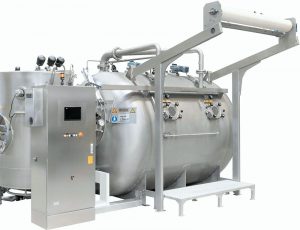
Germany-based Then, a member of the CHTC Fong’s International Group and a Fong’s Europe GmbH brand, introduced the hydraulic high-temperature THEN Smartflow TSF dyeing machine with a unique reel-less round shape. The machine features a smart fabric transport system to ensure even dyeing; a heat exchanger to quickly and efficiently heat the dye liquor; and optimized chemical, dyestuff and salt dosing to reduce waste and optimize results. The Smartflow TSF has a low liquor ratio of 1:2.5 with a full load of man-made fiber fabrics. “We take the global green deal seriously and analyze production and working processes for their environmental impact,” said Fong’s Europe Director of Sales and Marketing Richard Fander. “The chambers of the Smartflow TSF can accommodate variable loads in terms of both weight and material type down to 40 kg for extremely flexible processing, and each unit can be equipped with up to six chambers, in order to fully maximize productivity, while taking up to 40-percent less floor space than competing systems. Overall, the machine is a reliable and efficient solution for textile dyeing that can help textile manufacturers reduce their environmental impact while improving their processes.” THEN also offers the Supratec LTM dyeing machine suitable for sensitive highly elastic and delicate man-made fiber fabrics. The long tube-shaped machine design can be tailor-made for customers with one or two nozzles for full filling with acceptable fast turn times. Each kier has a capacity of up to 200 kilograms and the machine runs at 80 to 600 meters per minute.
Germany-based Goller, a member of the CHTC Fong’s International Group and a Fong’s Europe GmbH brand, promoted its KnitExcellence package for wet finishing treatment of knit textiles at ITMA. Comprised of the Knit Complexa for bleaching, Knit Mercer for mercerization, Knit Economica for dyeing, and the Sintensa washing range, the package offers a manufacturer a complete range of machinery for processing knit fabrics. The company also introduced the new Oxidator module for all types of woven fabrics. The machine features a washing compartment with an inter-changeable, modular design that can be modified to meet a variety of washing requirements to produce different fabric qualities. The unit combines powerful, adjustable angle spray washing with up-down roller washing. The design also can house 25-percent more fabric than a conventional drum washer.
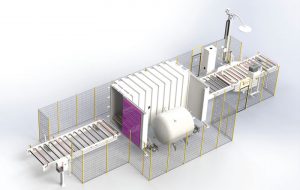
Another member of the CHTC Fong’s International Group and Fong’s Europe brand, Xorella, Switzerland, launched the XO Solid machine series, as well as XO Automation for the double XO Select conditioning machine series. The XO Solid was designed to complement the company’s existing XO Smart, XO Trend and XO Select yarn vacuum conditioning and heat setting machines. XO Solid features a cubical design with a high loading space of 1,800 millimeters (mm) x 1,700 mm x 4,000 mm, which allows six units to be manually loaded on the floor level. The “plug and play” machine includes all components preinstalled on a single frame for easy installation at the customer site. Xorella’s XO Automation system is a roller conveyor technology for loading and unloading two-door XO Select condi-tioning machines. A customer may also opt to add a pallet wrapping machine, weighing station, label printer, safety fence and security system to complete the line. XO Automation fills the gap between the XO Select moving platform and the fully automated transportation system from spinning hall to warehouse.
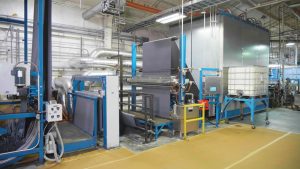
The TexCoat™ G4 from St. Louis-based Baldwin Technology Co. Inc. has its origins in a spray system used in the paper industry. Since its introduction at ITMA 2015, this non-con-tact spray application system for textile finishing and remoistening has started to take off. “Since its introduction at ITMA 2015 in Milan, global textile finishers have embraced TexCoat and are reaping the benefits,” said Rick Stanford, Baldwin’s vice president of Global Business Development, Textiles. “They have been able to increase profitability, cut energy use and reduce their carbon footprint in addition to exercising precision control with our patented precision spray technology.” The spray system vastly reduces water, chemicals and energy consumption with water consumption decreasing by as much as 50 percent compared to traditional pad application processes, and energy costs dipping by 35 to 50 percent. The technology also allows a manufacturer to finish the fabric on one or both sides at the same time depending on production requirements. Graniteville Specialty Fabrics, Graniteville, S.C., recently installed TexCoat technology at its operation.
Baldwin also offers the Plasma Pure treatment for textiles, which features ceramic electrodes that generate an air plasma to treat the fabric surface and improve absorption and adhesion properties of the fabric. The treatment enhances dyeing, coating and lamination results with uniform dyeing and greater bonding strength, among other advantages.
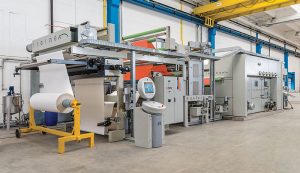
Post-ITMA, Germany-based A. Monforts Textilmaschinen GmbH & Co. KG reported it had welcomed a high number of visitors to its booth and had secured major orders from manufacturers in Central and South America, Pakistan and Italy.
At ITMA, the company highlighted its Montex tenter, which thanks to heat recovery and energy optimization options offers overall energy savings of 40 percent compared to convention tenters. “Exhaust air treatment on [tenter] frames has posed particular challenges over the years, since the air can contain significant amounts of oil, fiber and even wax particles that may see emissions limits being reached in the processing of certain fabrics,” explained Monforts Managing Director Gunnar Meyer. “In addressing this issue, we are incorporating the MonforClean module directly into the [tenter] frame. With this addition, the waste heat from the drying process is used to preheat the drying air, resulting in a radical reduction in the conventional heat supply required compared to gas and thermal oil heating.” Ontario-based nonwovens producer Albarrie was one of the first companies to install a Monfort Montex tenter equipped with the full range of MonforClean technologies.
“We were also very pleased with the interest in the Montex®Coat, the latest addition to our range of technologies, which we displayed in Milan,” said Nicole Croonenbroek, marketing manager. The Montex Coat may be used to apply PVC coatings, solvent coatings, pigment dyes, and minimal application surface and low penetration treatments. The flexible system accommodates knife and roller coating as well as screen printing for quick changes between fabric runs while still operating in an economical manner. The Montex Coat now features automatic edge limiters to immediately adapt to new production widths. The Montex Coat serves a very diverse number of markets and enables full PVC coatings, pigment dyeing or minimal application surface and low penetration treatments as well as solvent coatings. Knife coating, roller coating or screen printing can also all be carried out with this system. As such, it provides the ultimate in flexibility and the ability to switch quickly from one fabric run to the next, without compromising on the economical use of energy or raw materials.
France-based Superba S.a.S., known historically for its heat-setting solutions and today a member of the Belgium-based Vandewiele Group, has developed a new modular version of its MCD3 space-dyeing machine for carpet and rug yarns. The MCD3M can be scaled on demand in blocks of two or three modules to meet a customer’s needs. This modularity enables a manufacturer to control the cost of production, energy consumption and waste. Similar to its predecessor, the MCD3M can handle a layer of 72 ends of bulk continuous filament or spun nylon, polyester, wool or polyacrylonitrile yarns and blends. A high-pressure spraying technique is used for even application.
Dyes, Auxiliaries And Finishes
As well as producers of dyeing and finishing machinery, companies producing dyes, chemicals and auxiliaries were present at ITMA to share their latest sustainable innovations. Italy-based ERCA Textile Chemistry introduced a new generation of auxiliary chemicals made from used vegetable oil; and Officina39, also based in Italy, showcased its Ecobinder R Series binder made from 100-percent post-consumer recycled polymer obtained from recycled windshields and other types of laminated and safety glass, and Recycrom™ dyestuff products derived from 100-percent recycled used clothing, fibrous mate-rial and textile scraps (See “Just A Few Of The ‘Cool’ Things On Display —The ITMA 2023 Edition,” TW, July/August 2023).
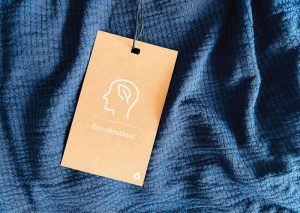
Avient Specialty Inks, Kennesaw, Ga., has expanded its MagnaColours® ITO dye range with the ITOFIX EVO reactive dyes. When used on cellulose fibers, the dyes reduce the processing cycle time and may be used at a lower dyeing temperature because of faster fixation capabilities, according to the company. The range is currently available in 10 different shades and is formulated to reduce hazardous substances without compromising on performance. Avient reports its Taoyuan production facility has achieved full compliance with the Global Recycled Standard 4.0 and also is recognized as a bluesign® System Partner as a provider of colorants and additives for spin dyeing.
Switerland-based HeiQ highlighted its biobased textile innovations for allergen reduction, odor control and cooling during ITMA. The company reports its technologies are designed to provide “superpowers” to fabrics, adding functionality while remaining a sustainable choice. Some of the technologies available include:
- HeiQ Allergen Tech, which confers protection against inanimate allergens such as house dust mite matter and pet allergens in home textiles;
- HeiQ Cool, a dual-action cooling technology that offers up to a 5.4°F cooler fabric temperature compared to an untreated fabric for enhanced thermal and moisture comfort;
- HeiQ Mint, a plant-based odor management solution that has no impact on breathability, color, hand or wicking properties and also is suitable for a wide range of applica-tions from apparel to home textiles on a variety of fiber types; and
- HeiQ Fresh, a silver-free odor con-trol technology that tackles smells by adsorbing volatile organic com-pounds responsible for the odor.
First-time ITMA exhibitor Fuze Technologies, Salt Lake City, reported an extremely successful show. The company offers FUZE, a silver- and water-based, non-ionic and chemical-free technology that can be applied to textiles to confer permanent protection from odor-causing and infectious-disease-carrying bacteria. The patented laser ablation manufacturing process allows the company to create particles of a precise size and shape to fit the application. Because FUZE uses pure silver particles that are non-ionic, no silver ions are released and therefore there is no negative effect on the environment and the chemistry is not harmful to humans. The technology requires no chemical binders or surfactants and is applied using a light mist. It also may be blended with other treatments such as whiteners and softeners. According to the company, testing has shown the treatment to remain more than 99-percent effective on textile products for more than 100 washes. The initially expensive technology was originally only available on high-end products, but a boost in interest as a result of the COVID pandemic dropped the price of the technology substantially and it now is moving into many more medical, nonwovens and hospitality products.
Related Technologies, Innovations
Germany-based Pulcra Chemicals GmbH introduced the combined pretreatment and dyeing process, Sustineri Coloring, developed in partnership with the Spain-based fashion group Inditex. Based on newly developed chemicals, the process allows one bath to be used for pretreatment and dyeing for dark, medium and light shades of cotton and polycotton blends using an exhaust method. According to the companies, studies performed in mills that are already using the process show that Sustineri Coloring can reduce pretreatment and dyeing time by up to 60 percent. In addition, water consumption is reduced by up to 80 percent and energy consumption by up to 60 percent compared to traditional processing methods.
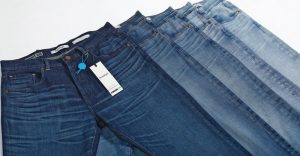
Inditex also collaborated with Spain-based Jeanologia S.L. to develop the Air Fiber Washer, a solution to tackle the release of microfibers from garments during finishing before they are sold to the consumer. Jeanologia also offers the new Atmos, an atmospheric washing process that pairs its G2 ozone technology with the new patented INDRA system to pro-duce a stonewashed, authentic vintage look on denim without using water, chemicals or pumice stones (See “Just A Few Of The ‘Cool’ Things On Dis-play — The ITMA 2023 Edition,” TW, July/August 2023).
November/December 2023




